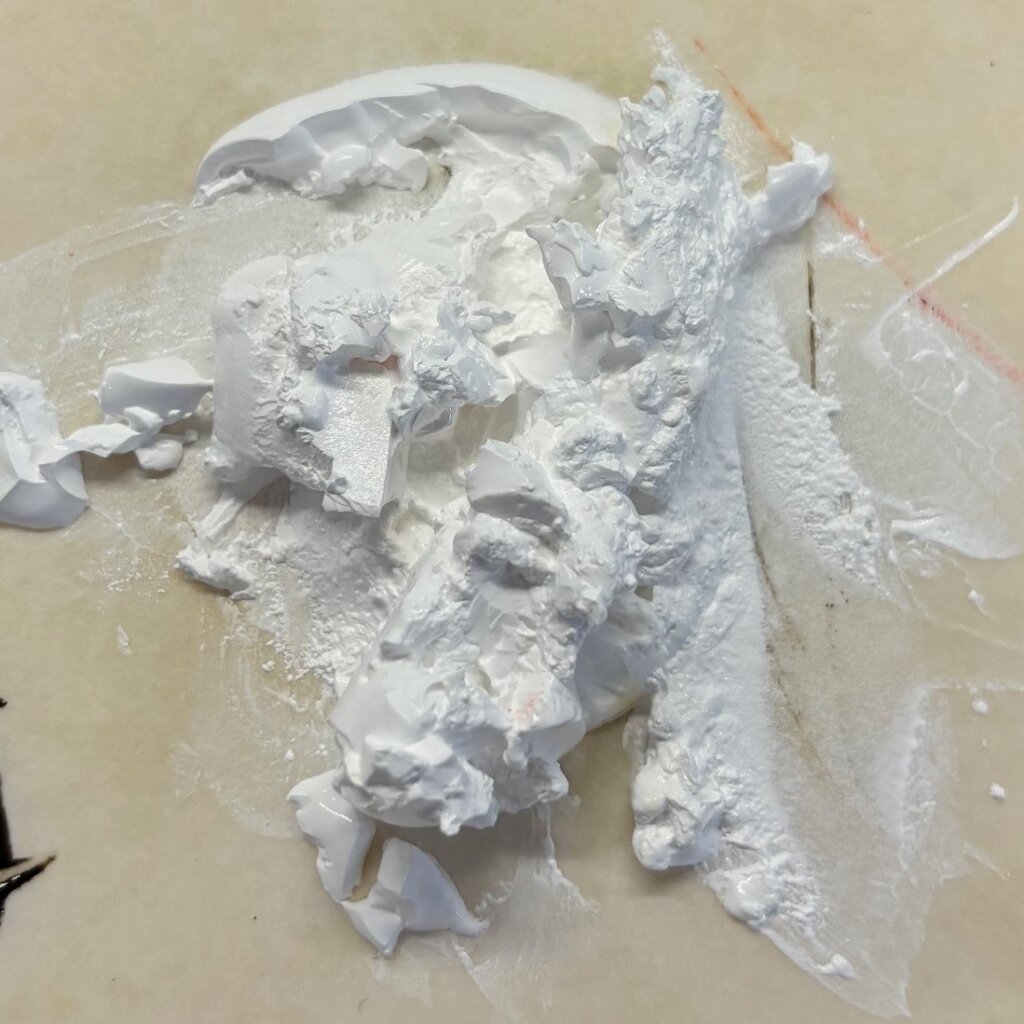
Morning Class,
This week, I came across an interesting article on ‘Just Paint’ (Golden Paints Blog), which I thought I’d share with you.
It looks at the common problem of acrylic paints becoming over-diluted when stored in a stay-wet palette and tests the Masterson’s Sta-wet Palette, it’s absorbent sponge, with Golden Wetting Agent.
(The Wetting Agent was previously called ‘Acrylic Flow Release’)
I find using a stay-wet palette really helpful when my acrylics dry too quickly in the studio.
I’ll often premix colours on a tear-off palette and transfer the paint piles into a stay-wet palette. It acts as a loading bay where I can keep my acrylic mixes workable for a few days.

I currently use the Daler Rowney Stay Wet palette above, and it consists of two layers :
- An absorbent paper layer that is soaked with water – acts as a water reservoir.
- A sheet of grease-proof paper acts as a membrane to prevent all water from entering the paint immediately, as well as a lid.
I lay my acrylic paints out on top of the grease-proof sheet, and as the acrylics dry, the water in the paint is replaced by the water held in the absorbent paper layer.
It definitely keeps paints workable for longer, but there are a couple of caveats.
When I leave mixes in there for longer than a few days, the water in the palette makes the paints much more fluid, so they blend into each other rather than keeping themselves separate. And once the lid is on, and it’s a warm week, there’s also the risk of mould growing on the damp paper.

I often advise using heavy-body acrylics for their greater stability. They can handle excess moisture and are still workable even if they dilute slightly. However, I have found that using Golden Open Acrylics and Golden Fluid Acrylics, which are a lot more fluid to start with, not as successful.

The Masterson Sta-Wet Super Pro Palette – you can see the yellow sponge
In the Golden Paints tests, the Mastersons’ Palette incorporates an absorbent sponge instead of paper underneath to hold the water.

They also tried using treated water (rather than tap water, which I usually use) to see if that would make a difference. Distilled water made a huge difference; the sediments and minerals have been removed, which helps reduce mould growth. Then, they added the Golden Wetting Agent, (which is a soap or Surfactant) in different ratios to help saturate the sponge.

Heavy Body Titanium White after a month in a Sta-Wet Palette using distilled water – taken from the Just Paint Blog, Golden Artists Colours Inc.
What was interesting about the results was that the heavy body acrylic maintained a pretty good consistency for weeks! It didn’t really move; it stayed in a more stable, thicker form.
The real key is to determine how much water to add to the sponge to achieve the desired consistency for the medium you’re using.
I tend to saturate the absorbent sheet and then pour off the excess water.
You can see a video from 12 years ago of me setting up a stay-wet palette. (I’m still using the same one!)
Anyway, I will try it myself with distilled water and see how I get on. Let me know if you give it a go.
As a side note, I saw that Masterson makes a large Super Pro Palette version, similar to the A3 size Daler Rowney used to make, which is now out of production. I’m always running out of paint-storing real estate, so I think on this occasion, I’ll have to go big!